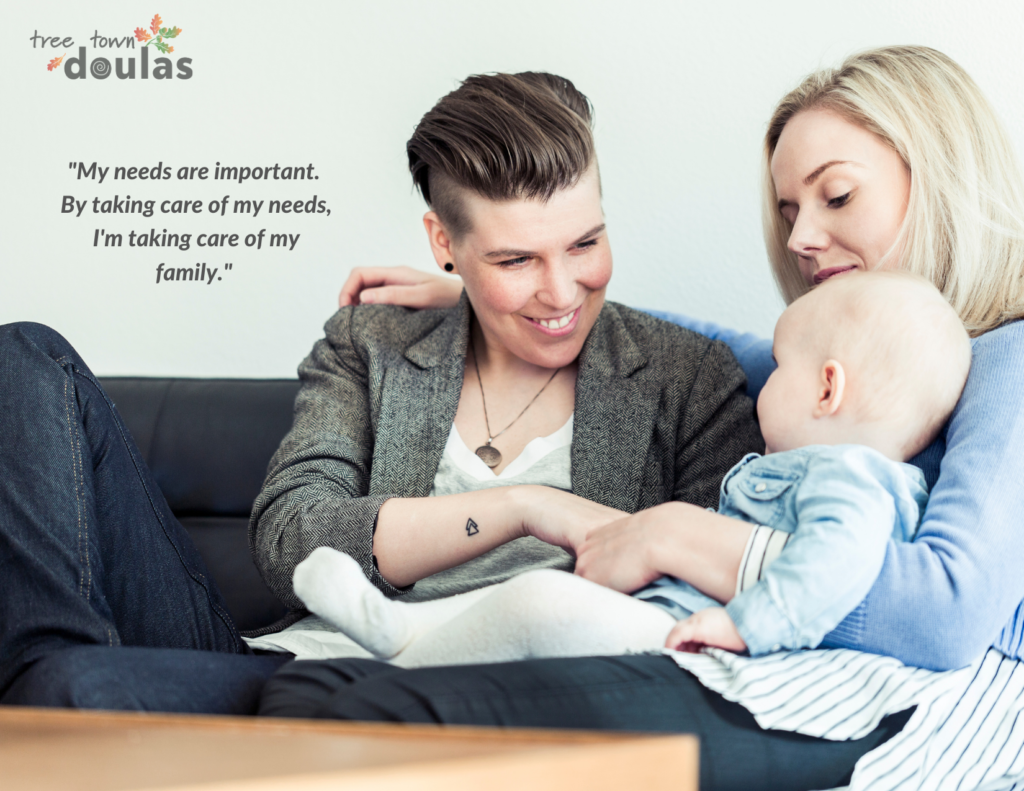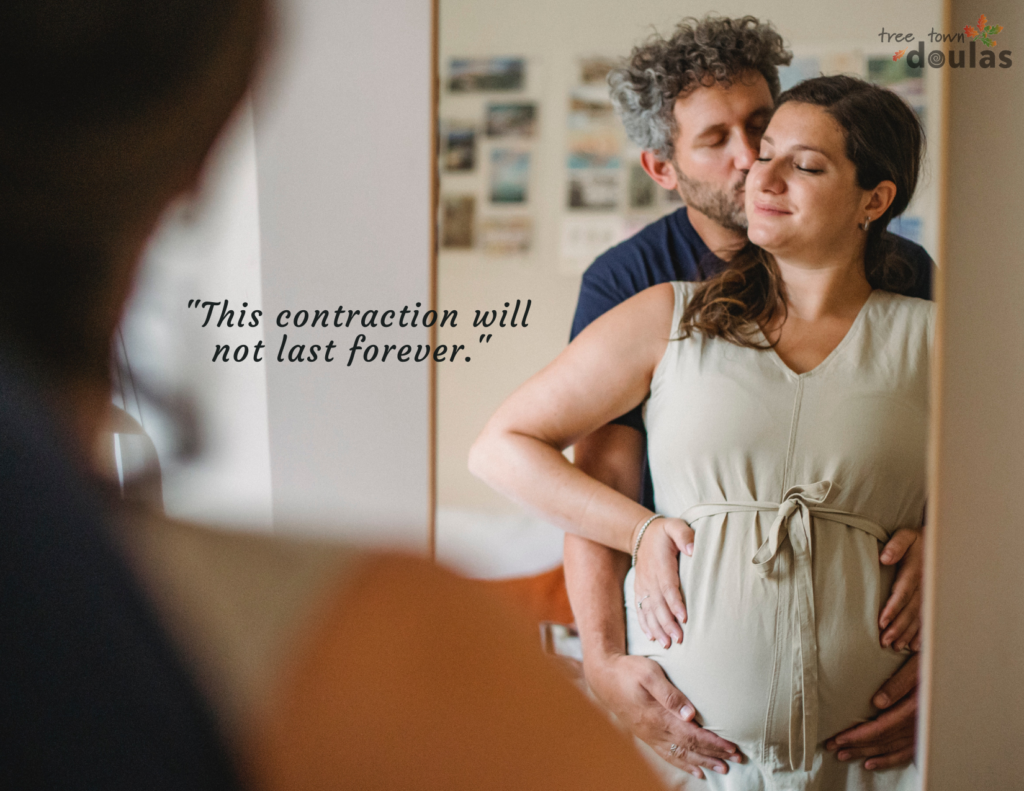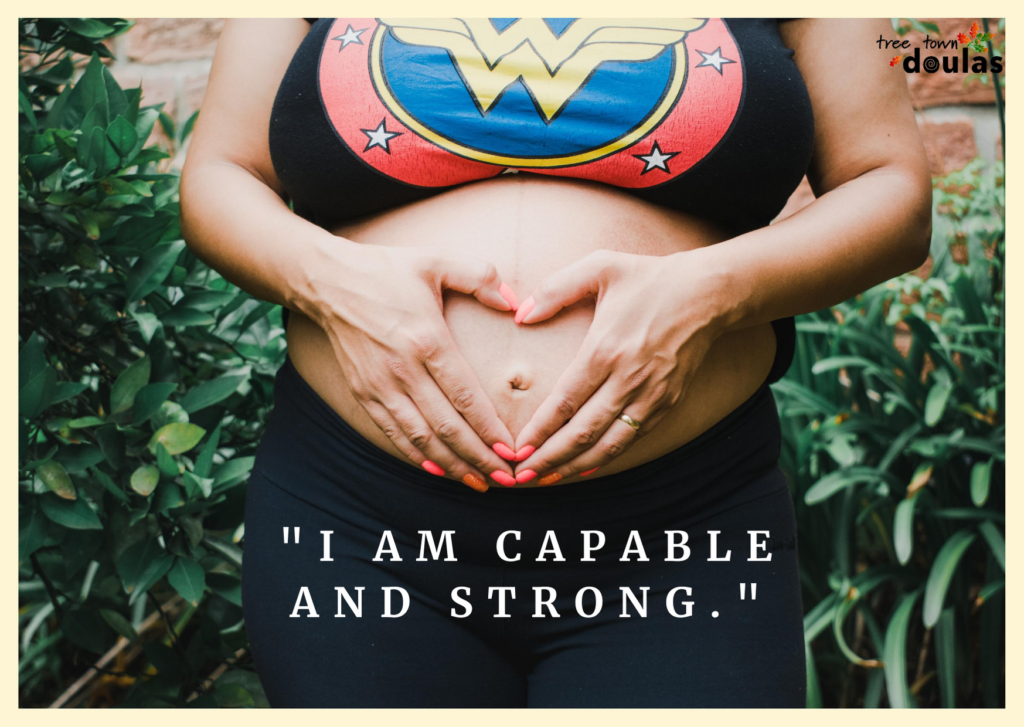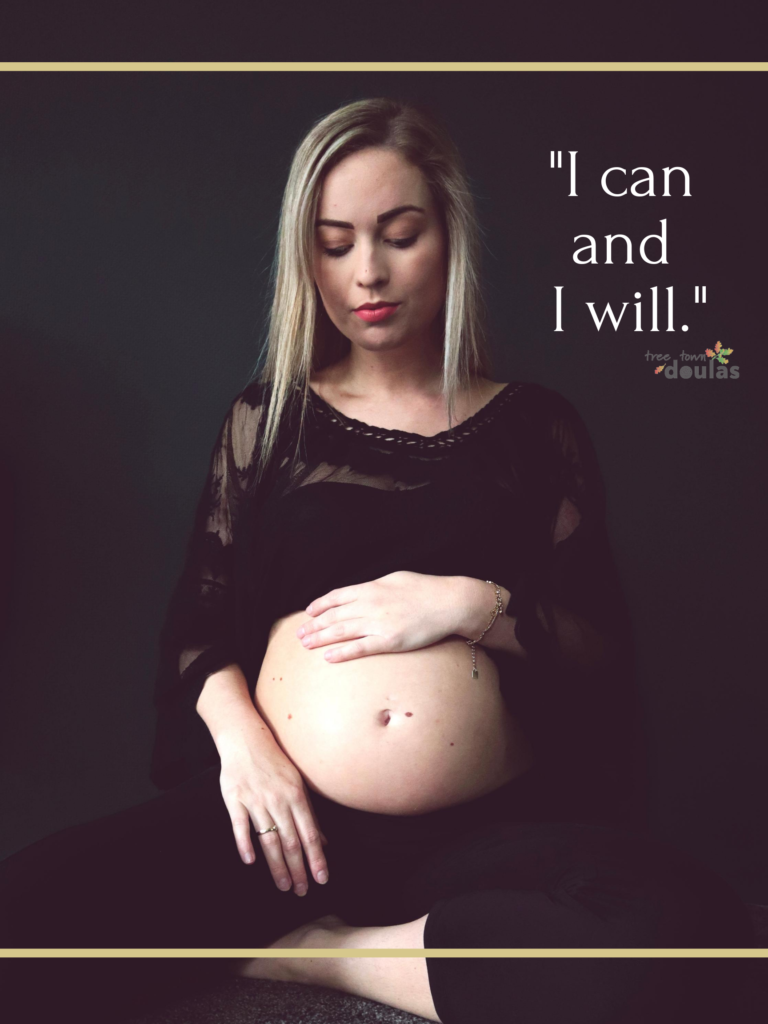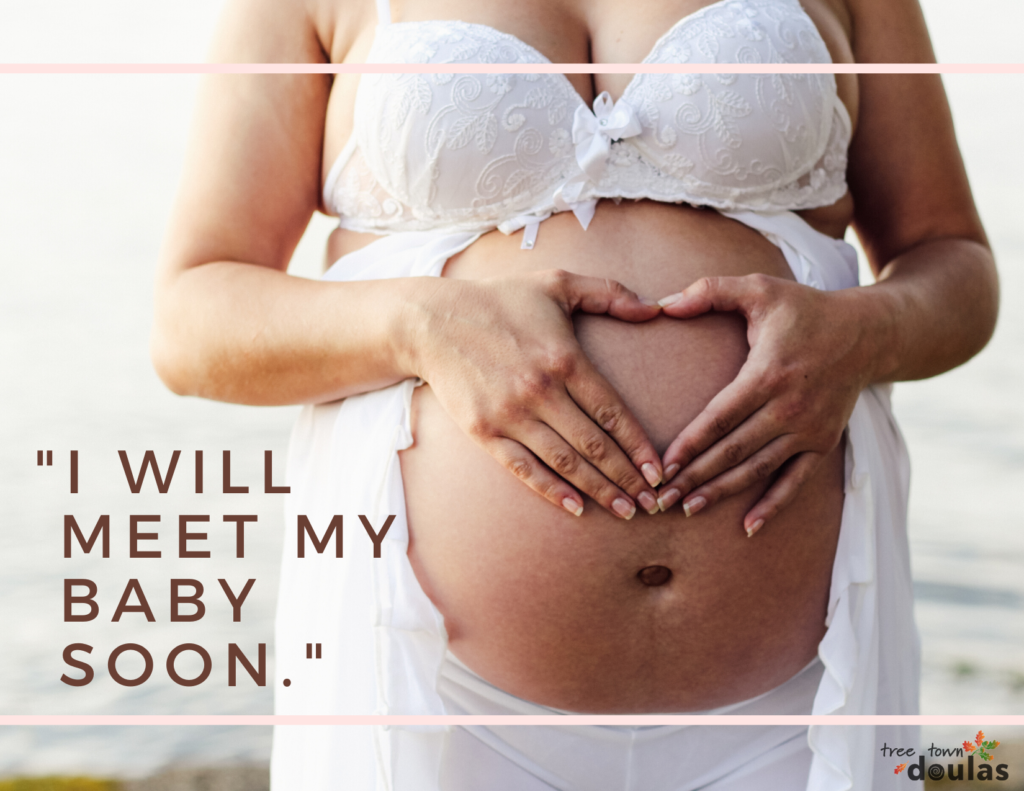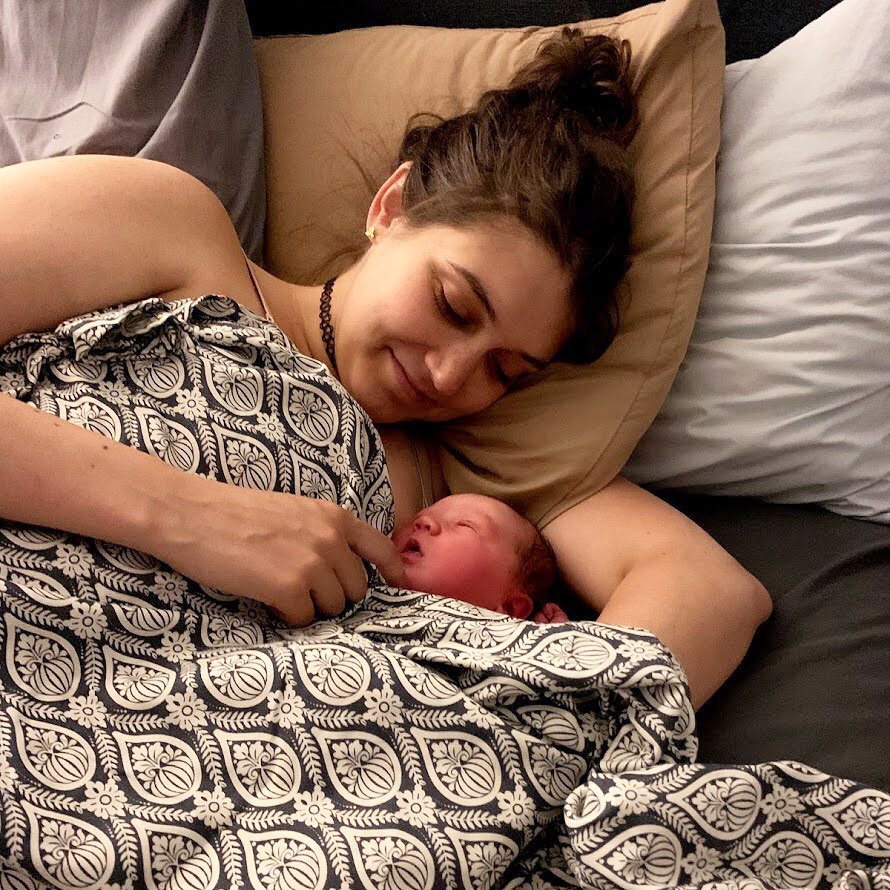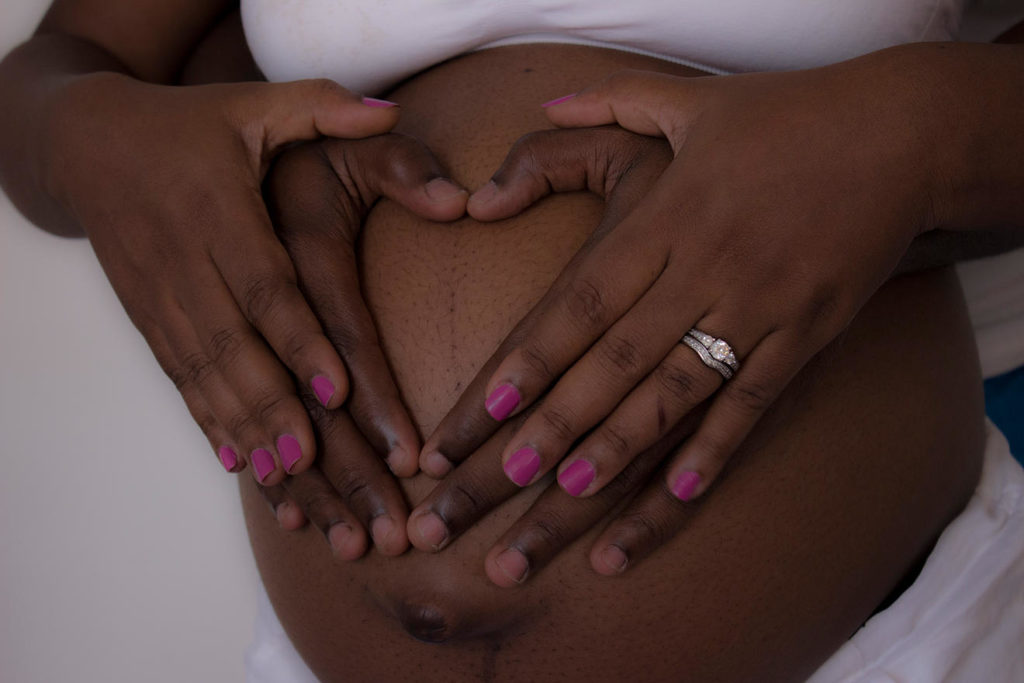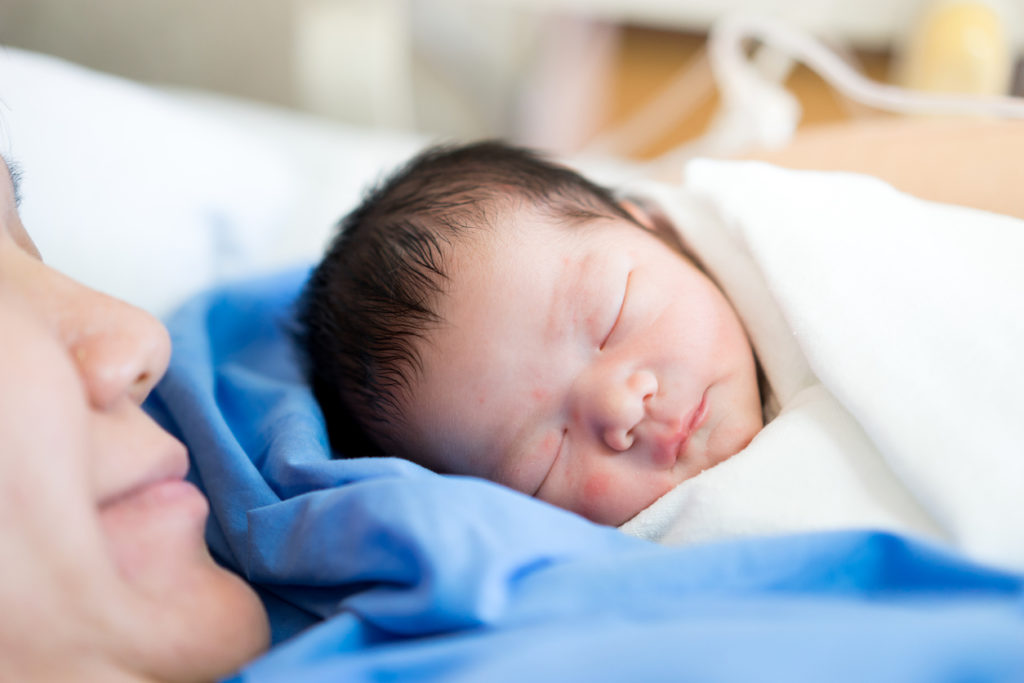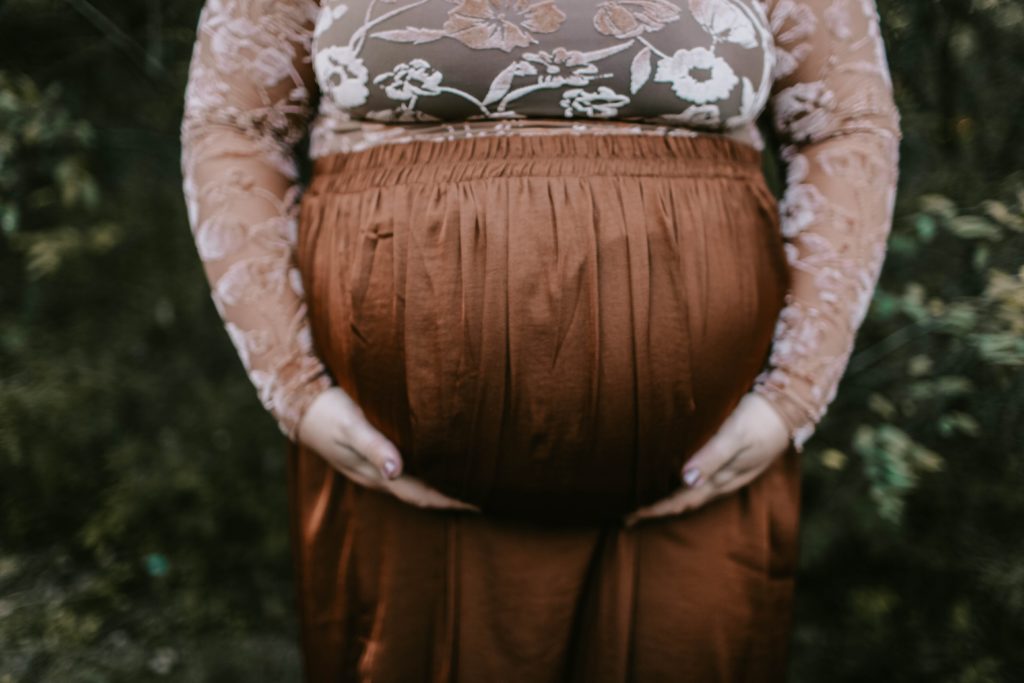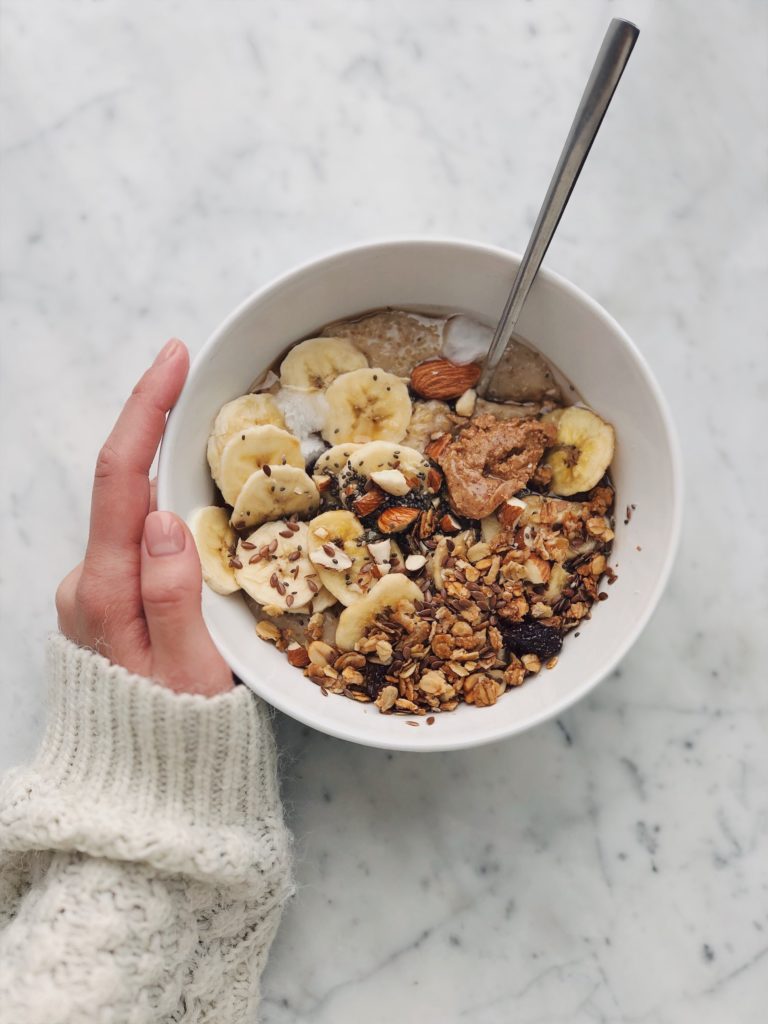birth
LIFE AS A BIRTH DOULA
As Turkey Day passes and autumn turns to winter, we start to welcome all of our holiday babies into the world. 🙂 We have a lot of Tree Town Babies on the way this holiday season! Some of these cuties we’ve already met, and some we still have yet to meet.
In light of these beautiful babies coming one after the other (starting with a few this past weekend), our doulas were joking around that Birth Doulas have 3 modes: conserve mode, mom mode, and “I’ve just been shot out of a rocket” mode. And it’s true!
You’ll find us in “conserve mode” the weeks leading up to your due date. ✨Any time we’re not checking in with you, you’ll find us sleeping, relaxing at home, practicing self-care to the max, taking long bubble baths, and going to bed early just in case we get that call in the middle of the night. Like trees hibernating during winter, we’re dormant but ready and waiting with anticipation.
You’ll find us in “mom mode” when we pull back your hair for you during labor. 🤱🏻 We’ll combat your doubts with a nurturing kindness, hold you when you have tears in your eyes, remind you of your own strength when you feel like giving up, and hold space with you during the toughest moments of your baby’s birth. You might be too exhausted to believe in yourself, so we’ll do it for you.
You can find us in “I’ve just been shot out of a rocket mode” whenever there’s an adrenaline rush. 🚀 The second we see the words “I think I’m having contractions” in our text messages is a big one. It’s the the rush we feel when the labor and delivery team hurry in with their trays and umbilical clamps, or when we can see your baby’s head and we’re telling you to give just one more push so that you can meet them. The level of exhilaration is unreal and it feels like being propelled into the stratosphere.
Then there are the moments for the story books; the flashbulb memories that we don’t forget. 💡 The sound of your baby crying when they enter the world, the first time you look into your baby’s eyes, and the first time it clicks for you that you just birthed a whole human from your own sheer willpower and strength.
All of these moments combined are why we love what we do. We are so honored and unbelievably humbled by each person who invites us to be a part of these life-changing moments.
Thank you to all of you beautiful Tree Town Families. You never cease to amaze us.❤️🌳
FUN PREGNANCY FACTS THAT PROVE THE HUMAN BODY IS AWESOME
Calling all biology nerds!!!
We dedicate this week’s blog post to all of the weird, mind-blowing, and just plain awesome biology fun facts about pregnancy. Just the fact that the human body is able to create life is pretty awesome in itself – but it doesn’t stop there! So make “womb” for some super cool pregnancy biology facts (ba dum bum tssss) 😉
1. Ever hear the old wive’s tale that pregnancy heartburn means your baby will have a full head of hair? Well it’s NOT just a myth!
Don’t believe us? Check out the science 🙂 There’s a lot of folklore surrounding pregnancy, but this myth actually happens to be true! Throughout pregnancy your body experiences much higher levels of estrogen than usual because it is produced and released by the placenta. These estrogen levels can vary from parent to parent. Among many things, estrogen stimulates hair growth. So parents producing larger amounts of estrogen will generally have a baby with more hair. In order to prepare for labor, estrogen also helps loosen and relax the body, which happens to include the sphincter that connects your stomach and esophagus. A looser sphincter means more heartburn! So it’s not necessarily that the baby’s full head of hair is causing heartburn, it’s that the higher levels of estrogen are causing both of them independently of each other.
2. Babies can cry in the womb
Pretty wild, huh? This was discovered accidentally in a research study initially looking at the effects of tobacco and cocaine use on pregnancy. When the researchers played a loud and jarring sound against each mom’s belly while observing their baby through an ultrasound, a large number of the babies startled and opened their mouths as if to cry. This led the researchers to believe that the physical instinct of crying may be a behavior that develops in the womb, while the actual sounds of crying arrive after the baby is born.
3. Pregnancy can reduce symptoms of IBS!
Two of the defining characteristics of Irritable Bowel Syndrome (IBS) are: high amounts of inflammation in the gut, and abnormal populations of bacteria in the digestive tract. In general, inflammation is a handy defense mechanism that your body uses as a second-line of defense (only second to physical/chemical barriers like your skin, mucus membranes, the acidity of your stomach etc…). It’s your body’s version of “Battle Mode” against invaders and making the mad-dash to heal tissue damage. With IBS, the body increases inflammation to try to repair the irritable tissue and destroy bacteria/viruses trying to leak from the intestines. As a result of this, a lot of the healthy bacteria needed for digestion are killed and unhealthier balances of bacteria are left to grow. Along with the added inflammation, this causes the diarrhea, cramping, bloating, and mucus in the stool that are common in IBS. During pregnancy, your immune function decreases enormously. This is why pregnant parents are more likely to catch colds, the flu, and other nasty illnesses! This sounds scary, but it’s actually a really clever mechanism the human body has developed to prevent your immune system from seeing your baby as an “invader”. Your baby does have different DNA after all! Decreased immune responses mean less inflammation, and as a result, fewer of the unpleasant symptoms of IBS! Especially since the healthy bacteria are left to grow and be happy. Pretty cool, right? If your inner immunologist and microbiologists are geeking out, take a look at the study that discovered this!
4. If you’re taller than 5’5 you’re more likely to have twins
In particular, fraternal twins! And because of this, countries with taller populations tend to also have larger rates of twins. This is all thanks to a protein called IGF (aka Insuline-like Growth Factor). When the body is ready to grow, such as during puberty, the liver releases the protein IGF to help elongate bones. Shorter people have been found to have lower levels of IGF while taller people have higher levels. IGF also makes the ovaries more responsive to the hormone that triggers ovulation (Folicle-Stimulating Hormone). As a result, with more IGF and more stimulation of the ovaries, taller people are also more likely to release more than one egg at once!
5. The placenta is the only organ in the human body that’s not intended to be lifelong
The placenta is a well-known part of pregnancy, but many people forget that it’s actually an organ! It’s not just a layer of tissue between the baby and parent. It’s considered an endocrine organ because it releases its own hormones and consists of multiple types of tissue. So essentially, humans grow an entirely new organ solely for pregnancy, which is pretty cool! What’s more, the placenta is the only Temporary Organ that exists in the human body. Every other organ is supposed to last for the duration of our lifetime.
6. Subsequent pregnancies are easier on the immune system than the first pregnancy
For this cool fun fact we have to dip our toes in a bit of immunology. The immune system has two different branches: the Innate Immune System (general), and the Adaptive Immune System (specific). The innate immune system is the first-line of defense against outside pathogens that aims to clear away invaders and repair damaged tissue as quickly as possible (e.g. physical and chemical barriers such as skin, mucus membranes, inflammation, etc…). The adaptive immune system is much more advanced. It sends out a specialized team of immune cells that are tailored to each specific threat. Once the threat is cleared, the adaptive immune system holds on to cells that remember how to destroy that pathogen so it can be destroyed more efficiently next time. In order to do this, immune cells need to be able to differentiate between “self” and “non-self” cells. This becomes a bit more complicated during pregnancy, since the baby’s DNA is technically “half self” and “half not-self”! Key players in navigating this dichotomy are regulatory T cells, which are part of the adaptive immune system. Regulatory T cells prevent the body from overreacting by scaling back an attack when it’s no longer needed (e.g at the end of a cold), and intercept if misguided cells try to attack “self” tissues. During pregnancy, cells from the baby travel all around the parent’s body and frequently come into contact with regulatory T cells. These regulatory T cells tell the rest of the immune system not to attack the baby’s cells and tissues. Even after pregnancy some of these memory-holding regulatory T cells will be stored in the body, so that during the next pregnancy the body will be able to suppress its immune response more quickly and efficiently. With the suppression of immune responses becoming more effective and and less defensive against the baby with each pregnancy, subsequent pregnancies often have fewer negative complications/symptoms. For more info check out this awesome article!
7. A baby’s stem cells are stored in their parents’ body for the rest of their lives
And what’s even cooler, those stem cells can even travel around the body to help heal damaged organs and tissues! So regardless of how many pregnancies you have, and no matter how long those pregnancies lasted, each baby’s cells are stored in your body for the rest of your life.
8. The populations of bacteria in the digestive tract change drastically throughout each trimester
The human microbiome is awesome. For anyone new to Microbiology, a microbiome is a community of microscopic organisms (bacteria, viruses, fungi, etc..) that inhabit a given location, and in this case, different parts of the human body. A healthy microbiome is a delicate balance where each species of bacteria exists in just the right amount so that the community can coexist while not being harmful to their host human. Unless the microbiome is altered in some way (such as through antibiotics, certain illnesses, or extreme stress), the gut microbiome pretty much stays consistent throughout adulthood. The balance of bacterial species also tends to be similar for anyone in a given society/culture. During pregnancy, the body goes through a series of changes caused by the increase and decrease of different hormones and neurotransmitters. All of these hormones, neurotransmitters, immune factors, and the biological functions triggered by these molecules have enormous effects on the delicate balance of bacteria living in the digestive tract. While an increase in pregnancy hormones may provide an ideal living environment for some bacteria, it creates a hostile living environment for others and causes them to die out. This leaves room for other bacteria to grow in their place, and as a result changes the balance. The cool thing is, the pregnancy hormones select for bacteria that promote fat gain and decrease sensitivity to insulin, resulting in higher blood sugar levels. This particular microbiome, which would put non-pregnant parents at high risk for cardiovascular disease, is actually super healthy for pregnant people because it helps facilitate the growth of a baby and the production of breast/chest milk. During the third trimester of pregnancy, the microbiome changes again to favor bacteria associated with increased inflammation. This is most likely to maximize the amount of nutrients going to the baby in this last stretch of pregnancy. What’s even COOLER, is that researchers took samples of pregnancy microbiomes and put them in the intestines of non-pregnant mice. The mice then started showing increased fat gain, increase inflammation, and decreased insulin sensitivity even without the hormones associated with pregnancy. This suggests that the microbiome itself plays an enormous role in driving the biological functions of the body!
9. The foods you eat frequently during pregnancy are more likely to be your baby’s favorite as they get older
Although the placenta acts as a barrier, it’s not a perfect barrier. Flavors of food can cross through the placenta and into the amniotic fluid surrounding your baby! As a result, your baby swallows these flavors and starts developing their taste palate before they’re even born. Research has found that exposure to these flavors during the prenatal period have a profound effect on a baby’s taste preferences as they make the switch to solid food! This also might explain why people from different cultures can have such different flavor preferences!
10. Your heart grows bigger during pregnancy
And we don’t just mean metaphorically upon seeing your beautiful little one. In order to transport enough oxygen to both you and your baby, your blood volume increases by 30-50% during pregnancy! To accommodate this, your heart actually grows larger.This is why pregnant parents also tend to have higher heart rates than parents who are not pregnant.
11. Increased levels of the hormone relaxin makes your muscles and tendons more flexible/limber
This is in preparation for labor so that your pelvis, joints, and soft tissues (such as the cervix) can stretch more easily to accommodate the growth and birth of a baby. This is also why some parents go up an entire shoe size during pregnancy! By loosening the ligaments and tendons in your feet, relaxin allows the bones and muscles to expand and flatten out more. So your feet aren’t technically “growing” a whole shoe size they’re just stretched out due to the decrease in tension in your tissues. Swelling and fluid retention also contributes to this. As handy as relaxin is, it’s also one of many reasons that we recommend avoiding high impact exercise during pregnancy because it increases the likelihood of broken bones. But as long as you’re listening to your doctor and not wrestling or playing football during pregnancy, you should be fine!
12. The bumps on your areolas help your baby initiate breastfeeding/chestfeeding
If you’ve ever looked closely at your chest or breasts, you’ll notice that your areolas have little bumps. Some people have more bumps concentrated around the edges, and some people have more bumps towards the area around the nipple. These bumps are called Montgomery’s Tubercles. If you lay your baby on your chest shortly after birth and leave them to their own devices, you’ll notice their heads will start to bob back and forth as they slowly bob and squirm towards the nipple.This is because Montgomery’s Tubercles release the same scent as amniotic fluid. Your baby, smelling the familiar scent of amniotic fluid that they associate with comfort and safety, bobs back and forth towards the scent. Ultimately, this draws them to the nipple even when they can’t open their eyes and helps start the initiation of breast/chestfeeding!
13. After birth, your temperature regulates to match what your baby needs
Of course you’ll be sweating up a storm after pushing your baby out. But for most parents, their core body temperature will actually increase for just those few hours after birth to help warm up the baby. This is one of many reasons that skin-to-skin is so important! Those little guys are tiny and need all the warmth they can get! Skin-to-skin has been proven to be way more effective at regulating an infant’s body temperature than an incubator.
14. Digestion slows down during pregnancy
This is all due to the hormone progesterone. Progesterone, which is at much higher levels during pregnancy, slows down digestion to help the intestines absorb more nutrients for both the parent and their baby. Unfortunately, this slower digestion is also why constipation is so common during pregnancy. Progesterone is also the culprit when it comes to causing the excessive daytime sleepiness that many parents experience during pregnancy.
If any of these facts have tickled your interest, feel free to send us a message! We’re always happy to geek out with fellow birth-nerds and biology-nerds 🙂 If there’s one thing we can attest to as doulas, it’s that:
The human body is pretty freakin’ awesome.
TONI’S TIPS FOR LABOR CLOTHES
There are a lot of important things to think about when you are planning your birth, but one thing that many people overlook is: What do you want to wear? Many people assume that when they are giving birth in a hospital that they will be required to wear a hospital gown. Although this is certainly an option, it is absolutely not a given! I am preparing for my third birth, and have attended dozens over the last 8 years, and I have seen people labor in anything and everything.
Some of the reasons that people might refuse the hospital gown:
- They aren’t necessarily the most comfortable material. These gowns are sometimes stiff inorganic materials with many tags and snaps that might irritate you.
- The back is open! For someone that plans on being mobile and possibly even walking the halls this can be a big deal. The suggestion from many nurses is to simply put on a second gown turned around backwards, but when you are working hard this might feel like a lot of clothes.
- You want to go in the tub or shower! Hydrotherapy is amazing, but no one wants to wear a gown in the bath. If you don’t plan ahead of time then your only other option may be wearing nothing (which is a perfectly wonderful option too).
- Wearing a gown brings back memories of being a patient. This is a really big deal for anyone that has spent time in a hospital for surgury or anything else major. As a laboring person you are not ill. You want to feel strong and in control. Wearing something that you choose might help in ways you can’t predict.
So what should you wear? The possibilities are endless. You might choose a loose fitting nightgown. Others choose to wear a skirt and sports bra. Still others go in expecting to labor completely nude. I have to say that many people put a lot of thought into what they will wear and end up nude. For my first birth I packed a 2 piece swim suit for the tub. I am fairly modest and thought that this was a brilliant idea. What I didn’t expect was to feel so confined by the tight synthetic material. Luckily, I had also packed a tank top that felt much better.
Some things to consider:
- At different points your care providers may want to access your belly (to monitor heart tones), your arm (for IV or blood pressure), and cervix (for a cervical exam). Not to mention the obvious access issue when you are actually pushing your baby out.
- Everyone has a different level of modesty. Most people want to be fairly covered while walking to their hospital room. Later on, however, it is common for all semblance of modesty to go out the window as heat and excitement ramp up. For others modesty is extremely important, so finding something that can keep them covered for all situations becomes very important.
- If you plan on using hydrotherapy, walking the halls, and otherwise doing whatever feels right at the time, then having options can be wonderful. If you only prepare for a waterbirth then you might find yourself grabbing that hospital gown if you decide you need a break from the tub. (Note: If your partner wants to join you in the shower or tub then they should also bring a swim suit).
- This might not matter at all to you. For others, however, having something that they like in those first family photos is important. I promise that people will be looking at the beautiful new family, not the clothes, but if it is important to you then go with what you love.
- After you give birth you are going to want to hold that little one skin to skin. Finding something that you can easily pull open or take off will make breastfeeding and bonding much easier.
I am personally planning to give birth in the next few weeks and have been carefully considering all of these things. I actually decided to splurge this time and buy myself a beautiful homemade hospital gown from an Etsy shop in Austin, TX called Mod Mum Maternity. The gown fully covers all sides of me, has snaps to facilitate breastfeeding, and best of all it has pockets!!! I also decided to get a matching microfiber robe. When I step out of the tub and try to dry off with those tiny towels, I want a big comfy robe to put on. In the tub I will likely just wear a tank top. I will throw a few in my bag so that I have a dry one to put on if I decide to get in and out. I did hire a birth photographer, and I will admit that it did play a part in what I ended up buying. I know that my hair will be a mess and I’ll be dripping with sweat, but maybe my cute outfit will make me feel a bit less self-conscious.
THE BIG FOUR
Now that football season is upon us, we’re sure you’ve heard of The Big Ten. Today, we’re here to talk about The Big Four: the 4 main things we recommend parents focus on when they experience their first labor contractions. It’s definitely possible that your baby will decide it’s time to make the journey Earth-Side before you’ve had the time to finish all of your preparations. Don’t panic! Do what you can, conserve your energy, and reach out to your support system if you need a little extra help putting together frozen meals, a hospital bag (if you’re having a hospital birth), or buying diapers. Raising a baby is a team effort (football pun intended), so once you’ve called your OB/midwife/doula/support system to let them know your baby is coming, here are The Big Four to focus on:
1. Stay calm
So your contractions have started! Congratulations!! For many parents, their first instinct is to switch into “Go Go Go” mode. All of the excitement, preparation, and anticipation has led up to this moment, and now your baby is finally on the way! Some parents may even feel stressed, anxious, blindsighted, or like they couldn’t possibly prepare enough! All of these reactions are TOTALLY normal. And even though it seems counter intuitive, the first thing we tell parents to do is to stay calm. Labor is exhausting, and even more so if you have a long birth. We’ve seen many parents use up a ton of energy and strength with that initial excitement/ adrenaline rush, which leaves them even more exhausted for the rest of the labor process. Save as much energy as you can for when you’re pushing your baby out! Although contractions will feel jarring and uncomfortable, please don’t forget that they are completely normal and they will not harm you. So whether it’s meditating, cooking, knitting, watching reruns of your favorite tv show, or going on a date with your partner. Do whatever you can during early labor to stay as calm and relaxed as possible to conserve your energy!
2. Eat a big meal
The next big thing we tell parents to focus on is eating a giant meal in whatever capacity works for you and your body. Whether you feast on the biggest burger you can find, or just eat a bowl of oatmeal with fruit and peanut butter. What’s important is filling your stomach and making sure your meal has lots of protein! Once contractions really get intense it’s common for parents to feel nauseous, exhausted, or to lose their appetite from everything that’s going on physically. This is all totally normal, but it also makes eating early on in labor SUPER important. Not only will it keep your energy and blood sugar up throughout labor, but a protein-packed meal will allow that meal to last you longer than a carb-filled meal. That way you don’t have to worry about eating as much if you do experience nausea. Plus, that extra boost can honestly make a HUGE difference when you start to tire out. Not only will you be giving nutrients and strength to your baby, but you’ll be less likely to experience complications related to calorie deficiency, you’ll have more energy, and as a result you’ll have more options for your birth experience. One of our rules of thumb for childbirth is: the more nutrients you put into your body before and throughout labor, the higher your confidence, strength, and endurance will be!
3. Take a nap
You read that right! When your contractions start, TAKE A NAP. This one also probably seems counter-intuitive, but it’s so true! If your contractions start in the middle of the night, roll back over and try to go back to sleep for as long as possible. And if your contractions start during the day, take a little snooze! Napping is along the same lines as our Stay Calm tip in the sense that you’re conserving energy for later in labor. Labor can be unpredictable. Some parents have births that last 2 hours, and some parents have births that last many days. Since you don’t know the next time you’ll sleep, resting as much as possible during the early parts of labor will help keep your energy up during the hard parts, and make sure you’re well-rested for as much of your baby’s birth as possible.
4. Take a shower or bath
If you’ve done the other 3 already, or if you’re just someone who feels more comfortable/calm when you’re clean and smelling like soap, try to take a bath or shower before active labor kicks in! Taking a nice warm shower can be exactly what some parents need to clear their heads, prepare for the journey ahead of them, and go into labor with positive mindset. Depending on where you give birth, you may have access to a shower or birthing tub, but it’s unlikely they’ll allow soaps if your water has already broken. Then after labor you’ll honestly be so exhausted and wrapped up in the beautiful little bundle you just gave life to. So lord knows the next time you’ll get to bathe! We honestly cannot sing enough praise for soaking in the tub or shower during early labor. Taking a warm bath/shower allows all of the muscles in your body to relax which makes it so much easier for your uterus to contract and your cervix to dilate. When your body is tense, your muscles hold your baby up further in your abdomen. So get in that tub, or step in that shower, and give yourself the relaxed, fresh start to labor you deserve!
Disclaimer: If you are in early labor and your water has already broken, do not take a bath unless your midwife or OB has said you’re in the clear!
All in all, these four things will help you start labor off strong so that you can get as close to your ideal birth as possible. So whether you’re a football fanatic, or someone who couldn’t care less about The Big Ten, just remember The Big Four! And above all else, if your contractions have started, remember to breathe. YOU CAN DO THIS.

